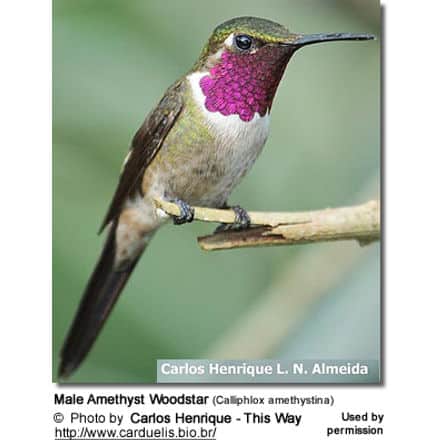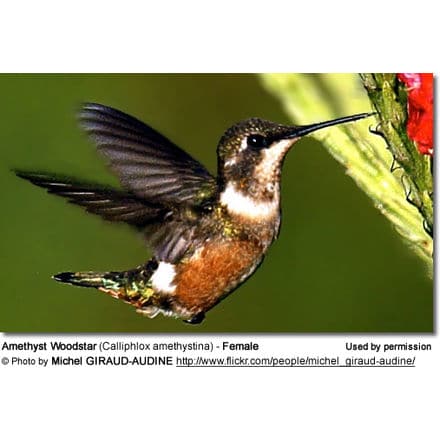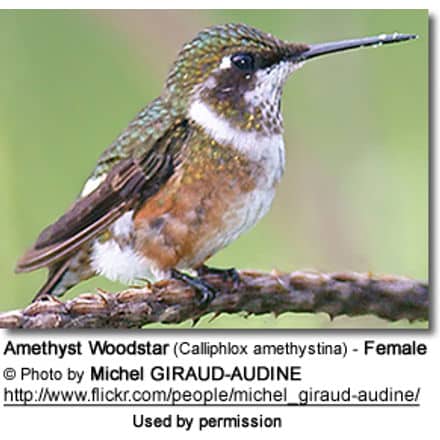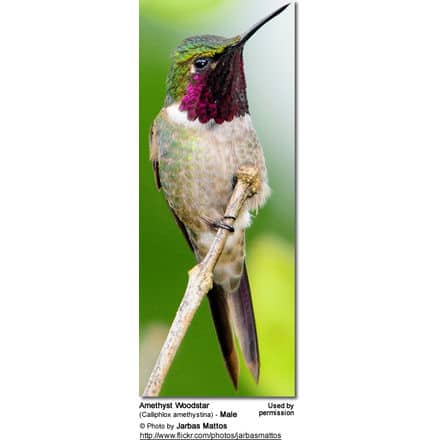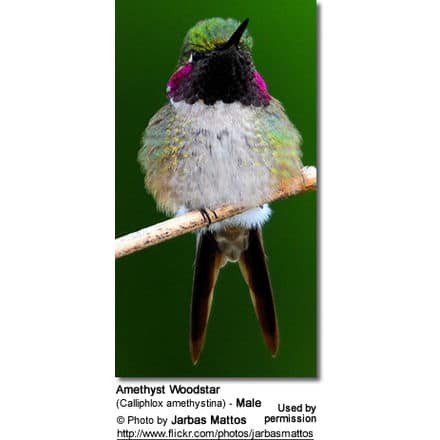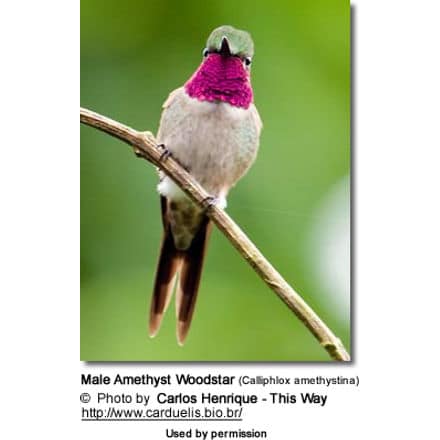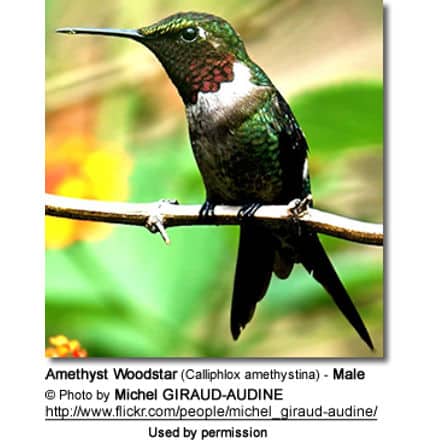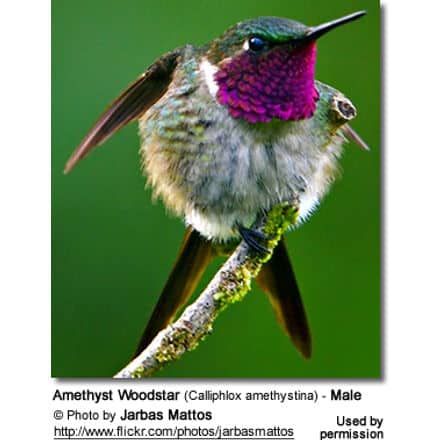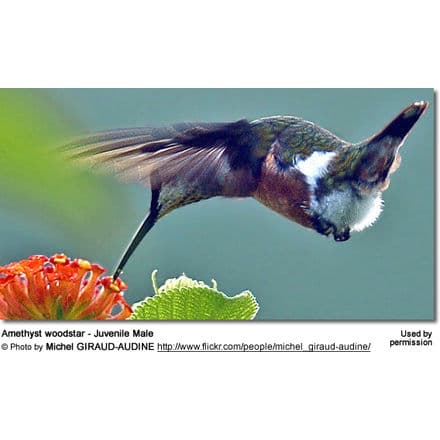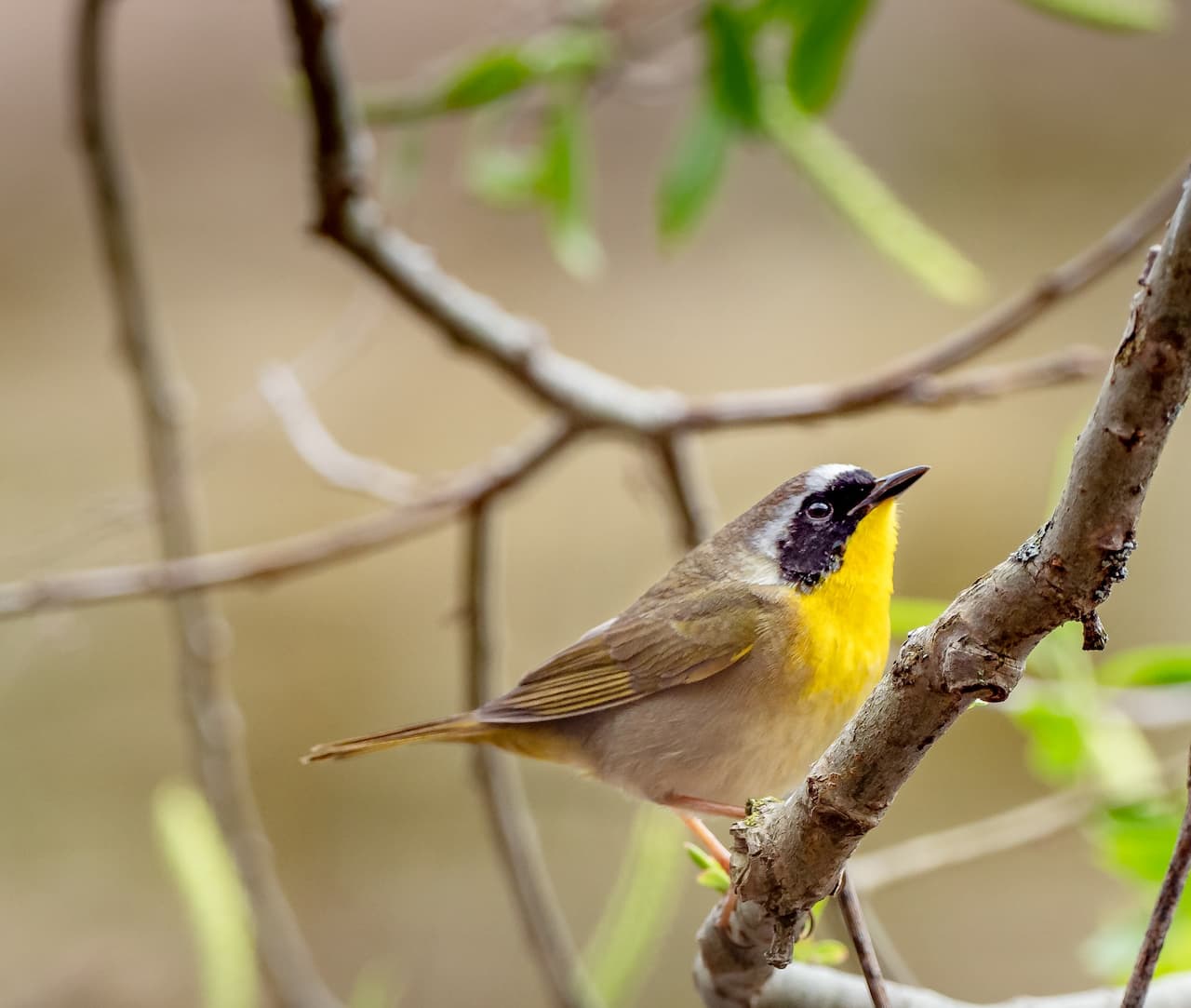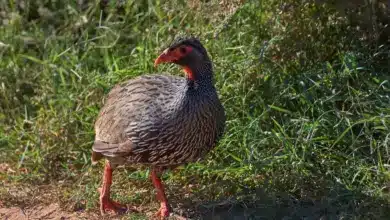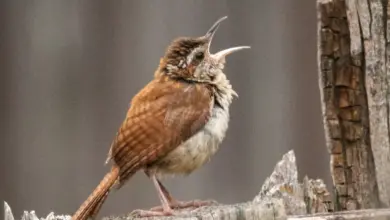Amethyst Woodstars
Amethyst Woodstars (Calliphlox amethystina)
Hummingbird Information
The Amethyst Woodstars (Calliphlox amethystina) – also referred to as Amythyst Woodstar – is one of the smallest hummingbirds in existence. It occurs naturally in South America east of the Andes from Venezuela to northern Argentina.
The Amethyst Woodstar is considered sedentary (non-migratory) within its range – except for some post-breeding dispersal.
Alternate (Global) Names
Spanish: Colibrí Amatista, Colibrí Estrella de Cola Tijereta, Picaflor amatista, Rumbito Amatista, Tucusito Amatista … Portuguese: beija-flor-besouro, Beija-flor-estrelinha-ametista, beija-flor-mosca, besourinho-ametista, besouro-zumbidor, estrelinha, Estrelinha-ametista, Tesourinha … Surinamese: Korke … French: Colibri améthyste …Italian: Silvistella ametista, Stella dei boschi ametista … German: Amethyst Kolibri, Amethystkolibri, Amethyststernkolibri …Czech: Kolibrík lila, kolib?ík lila … Danish: Ametystskovjuvel … Finnish: Ametistikolibri … Guarani: Mainumby michiete … Dutch: Amethistboself, Amethist boself … Norwegian: Ametystkolibri … Polish: Amety?cik, koliberek ametystowy … Russian: ??????????? ??????? … Slovak: cmelovec ametystový … Swedish: Ametistskogsjuvel … Japanese: ameshisutohachidori
Distribution / Range
The Amethyst Woodstar is found in most of central, and eastern South America proper, in northeastern Argentina (Misiones), northern Bolivia, Brazil, eastern Colombia, eastern Ecuador, French Guiana, Guyana, Suriname, Paraguay, northeastern Peru, and southern Venezuela.
They occur in the Andes foothills and higher elevations of upstream river systems; but are not found along the Amazon River itself in the central Amazon Basin or the central upper Basin.
In the Guianas, the Amethyst Woodstars are generally rare and very localized. In Suriname, they are mostly found in the sandy areas behind Zanderij Zanderij in Para..
The Amazon Woodstar are found in a wide variety of habitats, including open woodlands, savannas and forest clearings and gardens. They generally avoid forest interiors.
Description
The Amethyst Woodstar measures between 2.4 to 3.4 inches (6 – 8.5 cm) and generally weighs less than 0.11 oz (3 grams), which makes it one of the smallest birds in existence. (Note: Measurements by Edson Pelosi MSc of Environmental Sciences Brazil – Rio.)
These hummingbirds have short wings, straight black bills.
The adult male has an iridescent violet (amethyst) throat which can look dark / blackish in less favorable light conditions.
He has white band across the chest and a deeply forked tail.
The adult female has a whitish under plumage with green spots on her throat and a shorter tail than the male.
Nesting / Breeding
Hummingbirds are solitary in all aspects of life other than breeding; and the male’s only involvement in the reproductive process is the actual mating with the female. They neither live nor migrate in flocks; and there is no pair bond for this species. Males court females by flying in a u-shaped pattern in front of them. He will separate from the female immediately after copulation. One male may mate with several females. In all likelihood, the female will also mate with several males. The males do not participate in choosing the nest location, building the nest or raising the chicks.
The female Amethyst Woodstar is responsible for building the small cup-shaped nest out of plant fibers woven together and green moss on the outside for camouflage in a protected location in a shrub, bush or tree. She lines the nest with soft plant fibers, animal hair and feather down, and strengthens the structure with spider webbing and other sticky material, giving it an elastic quality to allow it to stretch to double its size as the chicks grow and need more room. The nest is typically found on a low, thin horizontal branch.
The average clutch consists of 1 to 3 white eggs (mostly two), which she incubates alone for 13 to 14 days, while the male defends his territory and the flowers he feeds on. The young are born blind, immobile and without any down.
The female alone protects and feeds the chicks with regurgitated food (mostly partially-digested insects since nectar is an insufficient source of protein for the growing chicks). The female pushes the food down the chicks’ throats with her long bill directly into their stomachs.
As is the case with other hummingbird species, the chicks are brooded only the first week or two, and left alone even on cooler nights after about 12 days – probably due to the small nest size. The chicks leave the nest when they are about 20 – 22 days old.
Diet / Feeding
The Amethyst Woodstars primarily feed on nectar taken from a variety of brightly colored, scented small flowers of trees, herbs, shrubs and epiphytes. They favor flowers with the highest sugar content (often red-colored and tubular-shaped) and seek out, and aggressively protect, those areas containing flowers with high energy nectar.They use their long, extendible, straw-like tongues to retrieve the nectar while hovering with their tails cocked upward as they are licking at the nectar up to 13 times per second. Sometimes they may be seen hanging on the flower while feeding.
Many native and cultivated plants on whose flowers these birds feed heavily rely on them for pollination. The mostly tubular-shaped flowers actually exclude most bees and butterflies from feeding on them and, subsequently, from pollinating the plants.
They may also visit local hummingbird feeders for some sugar water, or drink out of bird baths or water fountains where they will either hover and sip water as it runs over the edge; or they will perch on the edge and drink – like all the other birds; however, they only remain still for a short moment.
They also take some small spiders and insects – important sources of protein particularly needed during the breeding season to ensure the proper development of their young. Insects are often caught in flight (hawking); snatched off leaves or branches, or are taken from spider webs. A nesting female can capture up to 2,000 insects a day.
Males establish feeding territories, where they aggressively chase away other males as well as large insects – such as bumblebees and hawk moths – that want to feed in their territory. They use aerial flights and intimidating displays to defend their territories.
Metabolism and Survival and Flight Adaptions – Amazing Facts
- The tiny Amethyst Woodstar’s heartbeat is even faster than that of most of the other hummingbirds – it has been measured at 20 beats per second or 1,240 beats per minute
Species Research by Sibylle Johnson
Please Note: The articles or images on this page are the sole property of the authors or photographers. Please contact them directly with respect to any copyright or licensing questions. Thank you.

